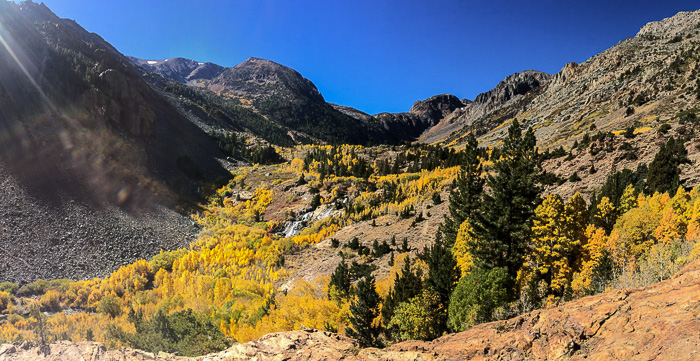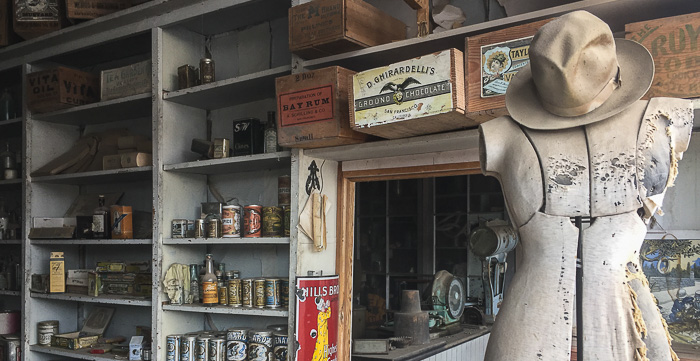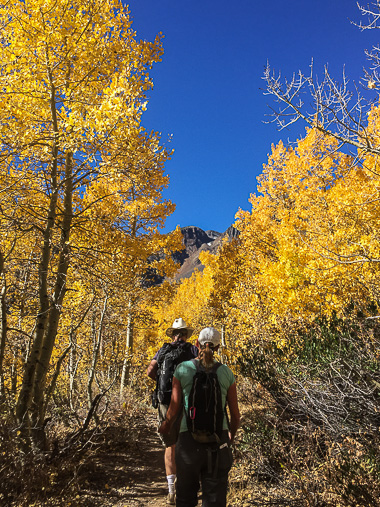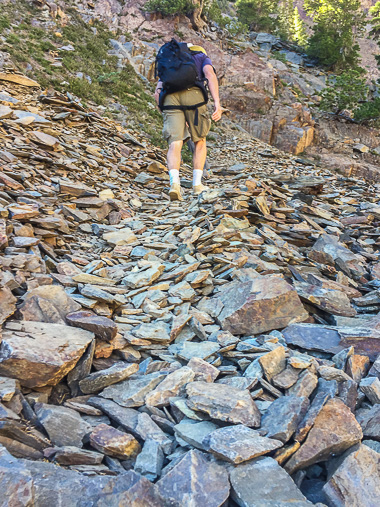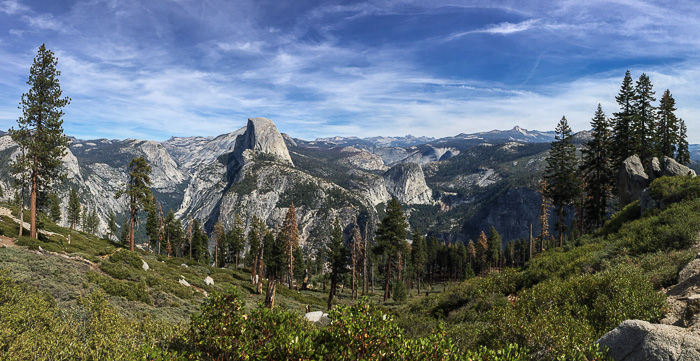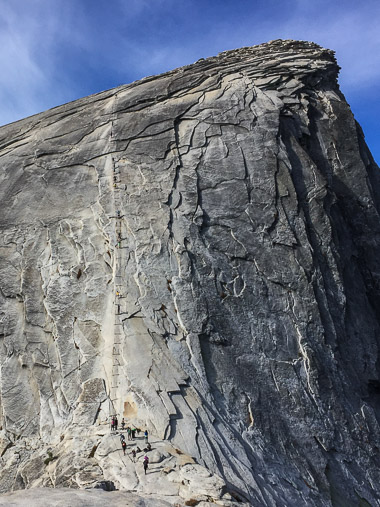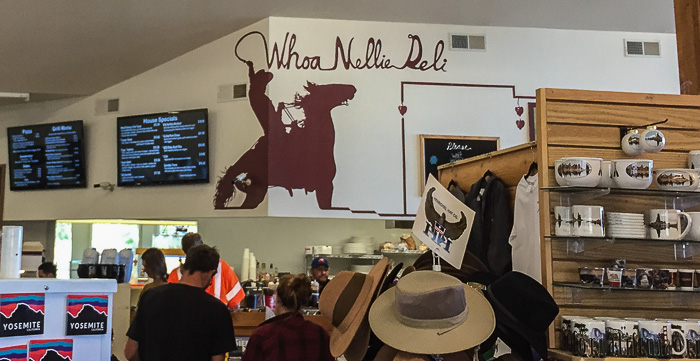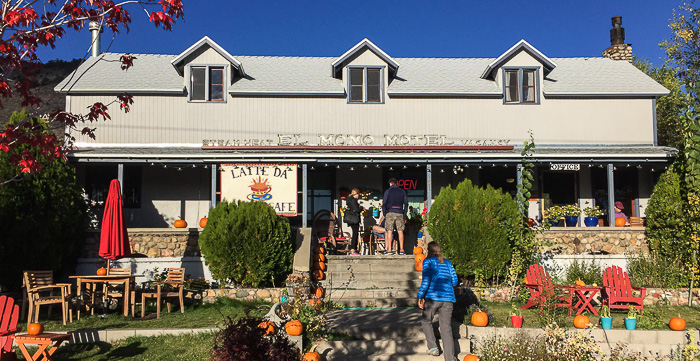Lee Vining: He was a guy. It’s a place. Visit!
I landed in Reno in early October primed and ready for a 3-week road trip with my best friend from high school. Though the original plan was to head south to Utah’s painted hills, Karen called an audible and switched things up. The Eastern Sierras hold a special place in her heart and the forecast called for crisp days with clear blue skies. She proposed staying further north, striking first for Lee Vining (who?) and Yosemite. Yes! Why not? We could always run south if the weather took a turn.
Thus we began, our borrowed 1996 Nissan Pathfinder stuffed with camping gear, groceries, and sweet anticipation. I fell in love with the Eastern Sierras in general and Lee Vining in particular - the quaint town is the perfect launchpad for adventures in every direction.
So who is Lee Vining? According to this article, Leroy Vining was a former Texas Ranger who came a-prospectin’ and founded the town - originally a mining camp - in 1852. In the course of his life, Leroy fought in the Mexican war, built a racetrack, owned a saloon in Mariposa, and was one of twelve men charged with murder after a Sonora mine uprising. Vining came to the Mono area for gold but when that didn’t pan out (!), he built a sawmill and found success selling lumber to local mining operations. It’s said that he died in 1863 from an accidental self-inflicted gunshot wound. Life lesson from Lee: Don’t carry a loaded pistol in your pocket, especially when drinking.
The town didn’t become “Lee Vining” until 1957. Prior to that, it was known as “Poverty Flat” (due to the harsh and inhospitable growing conditions for farmers), “Lakeview” (wishful thinking by the town developer, but the name was already taken by another California town), and “Leevining” (the Postal Service separated to two words).
There’s no shortage of cool stuff to do in and around Lee Vining. Here’s a north-to-south rundown of top recommendations, each further described below:
- Visit Bodie, one of the best ghost towns in the U.S.
- Hike Lundy Canyon
- See the other-worldly tufas in Mono Lake
- Drive the Tioga Road into Yosemite
- Eat at the Whoa Nellie Deli in Lee Vining
- Drive the June Lake scenic loop
Bodie State Historic Park
Bodie is not a commercialized tourist trap, trading in old-timey western goods, but rather an historic ghost town owned by the California State Parks. It is preserved in a state of “arrested decay” in which buildings are stabilized or repaired but not restored. Doors are locked tight, protecting the thousands of pieces of furniture, clothing, books, etc., left behind by former residents. It’s a town frozen in time, slowly gathering dust, and a unique chance for visitors to peek into the past.
When writing this I got caught up in the awesomeness that is Bodie and ended up with a whole other article! Check out that post for a brief history of the town, fun facts, and helpful links. Here’s the practical stuff:
- If you visit, purchase the $2 self-guided tour booklet - it’s well worth it!
- Check in advance for tours and history talks; they bring the town to life.
- Visitors can tour the Stamp Mill for $6 per person. Tours run regularly in the summer (three times a day); call for times in September and October (760–647–6445).
- The park charges an entrance fee of $8/adult and $5/child (age 3–17). Check their website for up-to-date information.
- Special events in the summer include a Ghost Walk, Ghost Mill Tour, and Star Stories. Fun!
Bodie lies about 30 miles northeast of Lee Vining. Our drive took 45 minutes with 30 minutes of that on 270, the 14 miles of unpaved road that runs from Route 395 to Bodie. Be prepared for a slow, bumpy ride on washboard roads.
Lundy Canyon
This canyon is about 13 miles northwest of Lee Vining, typically a 25-minute drive. The signboard at the Lundy Canyon trailhead proclaims “Your hike through this canyon will take you by some of the finest displays of wildflowers, waterfalls and fall colors in the Hoover Wilderness.” I can’t attest to the veracity of that statement since this was my only hike in the Hoover area, a strip of wilderness bordering the northeast section of Yosemite National Park, but it was awfully pretty.
We hiked Lundy with one of Karen’s friends Alan, a local wildland firefighter. It’s one of his favorites in the area, though less so since it’s been “discovered.” Luckily, the further you hike, the fewer people you see. We took a leisurely 5 hours to do a ~5.5-mile out-and-back to Lake Helen (long stop for lunch!), and though the trailhead was packed with cars, we saw only a handful of folks once past that 30-minute hiker zone.
I’d never considered the stark Sierras as a “fall foliage” destination, but after two weeks of October hiking, I’m a convinced. There’s no color explosion as in the east, but rather startling pockets of brilliant red, orange and yellow. Set against drab brown and grey, the contrast is breathtaking. Red and orange didn’t make much of an appearance in Lundy; the yellow “Aspen glow” dominated.
This article from Modern Hiker gives a detailed description of the hike up to the third waterfall, where most folks should turn back. The trail is not maintained past this point and conditions are dangerous, requiring a steep climb through loose talus. I tell you, I am not cut out for hiking with wildland firefighters! Before heading out, this section was described as “a bit of loose rock, no big deal.” Ha! I survived, but seriously, this is treacherous stuff, and even Alan admitted that the trail had worsened since he’d last been out. If you want to get to Lake Helen or the 20 Lakes Basin, a better bet is the trailhead at Saddlebag lake, shown on this area map.
According to the Forest Service website, there’s a 1900-foot elevation gain up to Lake Helen. The hike is rated moderate to strenuous.
Mono Lake
This lake is special, so much so, I wrote this article about it. Read that for details, but here’s the CliffsNotes version: Mono Lake is a unique saline-soda lake showcasing other-worldly limestone tufas and volcanic craters.
If you’re in the area, be sure to:
- Visit the Mono Basin Scenic Area Visitor Center
- See the Mono Lake tufas
- Hike Panum Crater
If at all possible, spend the night in Lee Vining and rise early to experience sunrise over the tufas - stunning!
Yosemite
If you’re passing through Lee Vining, visit Yosemite National Park! The town is a popular jump-off point for the park so chances are, it’s already on your agenda. Lee Vining is situated near the northeastern entrance to Yosemite, and is a two-hour drive from Yosemite Valley and the iconic Half Dome and El Capitain.
Don’t have that much time, or don’t want to fight the crowds in the valley? There’s plenty to see along Tioga Road (State Route 120). Take a scenic drive with views of Yosemite’s expansive valley and massive granite domes, or head to Tuolumne Meadows Visitor Center (30 minutes from Lee Vining) and talk with a ranger to find a hike or two. Check on accessibility if traveling in winter and spring; Tioga Road is closed from October/November through late May or June.
When we visited, we camped just off Tioga Road at Porcupine Flat Campground. At 8,100 feet, it got awfully cold in October with overnight lows in the 20s (brr), but on the plus side, I go to experience the miracle-warmth of down socks (borrowed from Karen, they're a lightweight lifesaver overnight)). Note that Porcupine Flat has no water source and no firewood, so come prepared!
Sadly, we never hiked the Tuolomne area; it was my first time in the park so we concentrated our hiking in the valley on Four Mile Trail, the Panorama Trail, and Half Dome. Next time I’d like to check out the Ten Lakes trail and the Tuolomne Grove trail (with Giant Sequoias!), both recommended.
Lee Vining
After four chilly nights of camping in Yosemite, our brief stay in Lee Vining felt like living the high life. Somehow this tiny town with a population of ~200 managed to provide everything required to refresh and regroup.
The Mono Market had reasonable prices, an impressive selection given the tight footprint, and friendly staff who kindly provided quarters for my expedition to Nicely’s laundromat in the next building over.
Where do locals and tourists alike flock for a good meal? The Mobil gas station of course - the place was packed on a Sunday night! I love the one-stop shopping: gas up, use the facilities, purchase snacks and souvenirs, and take a seat at the Whoa Nellie Deli for breakfast, lunch, or dinner. The deli has a surprising menu and quality given its location. I stuck to an Angus cheeseburger and light beer that I’d purchased right there in the mini-mart (!), but could have sampled lobster taquitos, fish tacos, wild buffalo meatloaf, and more.
For coffee or a quick breakfast, be sure to stop into the Latte Da, part of the El Mono Motel. This cozy coffee house is my stand-out favorite: good coffee, delicious breakfast sandwich on fresh foccacia, and a charming porch with colorful chairs, swings, plants, and flowers. I could have lounged there all day, soaking up the sun.
June Lake Scenic Loop
Alas, we didn’t take the time to drive the picturesque June Lake loop, but Karen says it’s well worth the 20–30 minute detour off of I–395. Five miles south of Lee Vining and just 16 miles long, the scenic loop follows Highway 158 and showcases four serene lakes (June, Gull, Silver and Grant) nestled amongst the mountains. The area is chock full of hiking trails, so there’s plenty of options to hop out and stretch the legs. This road also closes in the winter, so check first; try this Caltrans listing of California mountain pass closures.
Need more to do? Check out the Lee Vining Chamber of Commerce and the Mono Lake Committee for other area activities.
This article is one of many written about a 3-week road trip spent hiking and camping in the Eastern Sierras and Death Valley. To see all articles, check out this trip summary.
